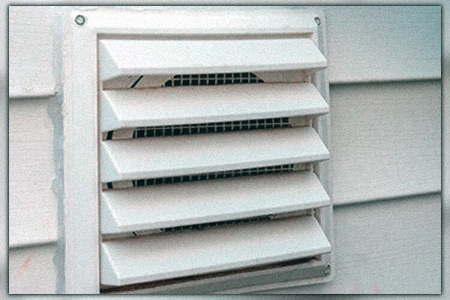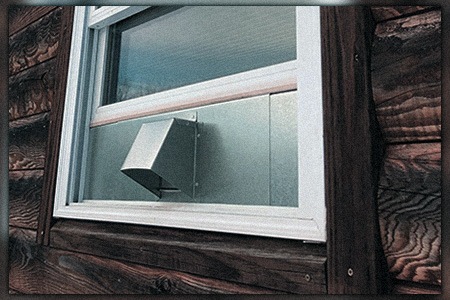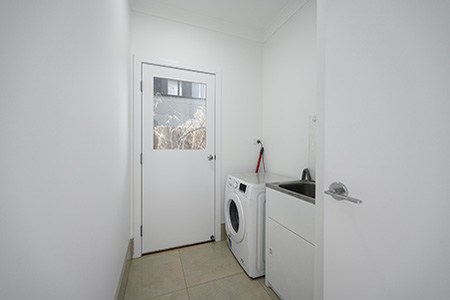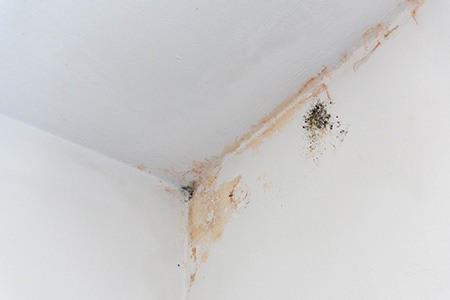How to Vent a Dryer Without a Vent to the Outside
Author: Omar Alonso | Editor: Omar Alonso
Review & Research: Jen Worst & Chris Miller

Do you have a dryer but no vent ducting system available in the house? Dryers require venting to the home's exterior to run efficiently and prevent fire and health hazards. Leaving the dryer vent open in the laundry room is a big mistake. Let's discuss how to vent a dryer without a vent to the outside.
The hot air coming from the back of the dryer will push against the wall, heating the material up to dangerous levels where it presents a fire risk to the home. The lint expelled from the exhaust vent enters the air column, creating a mess, a fire hazard, and a health problem. Breathing in fine lint particles isn't good for your lungs.
All dryers require you to attach the exhaust vent to a ducting system. Typically, this system vents to the outside of the house. Most homes have a pre-built vent duct installed by a professional because it requires cutting a hole in the wall to install the exhaust vent.
So, what do you do if you don't have a ducting system available in your home? How are you going to vent the dryer outdoors? This post discusses how to vent a dryer without a vent to outside areas around the house.
Why Do You Vent a Dryer Outside?

Do dryers have to be vented outside? We vent conventional clothes dryers out of a window or through a specialized ducting system for a reason.
These machines operate by drawing in air from inside the room, heating it, and circulating it in the drum before pushing it out through the exhaust vent at the back of the machine. If you don't vent the dryer properly, it presents a health and safety risk to the home.
How to Vent a Dryer Without a Vent to Outside
You have a few options if your home has no vent for the dryer leading directly outside or doesn't have a pre-installed exhaust ducting system for your dryer that leads to the attic. The best is to call a professional handyperson or service and have them install the correct ducting system for the dryer.
However, you might not have the budget to pay for a professional to install a system for your right now. If that's the case, try one of these hacks to safely vent your dryer exhaust outside the home. You'll want to do this, especially if you're drying your shoes in the dryer. They'll still stink a bit.
Vent the Dryer Out the Window

If you're renting an apartment or home, the landlord or property management company might not allow you to install a ducting system for the dryer and may have no dryer vent that leads to outside the apartment. So, the next best option is venting it out the window. You can purchase a window venting kit online from Amazon and attach it to the exhaust vent on the back of the dryer.
The ducting system comes with specialized fittings allowing you to connect it to the window frame. The hose connects to the fitting, venting outside without the wind blowing the hot air back into the room. If you can't find a proper venting kit, you can order a long line of ducting and leave it hanging around six feet out of the window.
Ensure the ducting exhaust isn't near flammable materials that the hot air can ignite. If you have a gas-powered dryer, it's essential to get the right window vent kit t to prevent the fumes from re-entering the home.
An indoor venting kit also comes with an external lint trap providing additional filtration when using the dryer in a laundry room in the house. The venting kits come in different sizes to suit the exhaust port on the back of the dryer.
Ensure you get the right size, as going too small means it won't fit the port, and going too big means you'll have to clamp the duct to the exhaust port, and it will crimp up, creating gaps that allow backflow of the air or gasses into the room.
Buy a Ventless Dryer

A ventless dryer is a popular option in Europe and is gaining popularity in the United States. A Ventless dryer has a slower drying operation than a conventional machine. They don't release any gases, so they're safe to run in the home without risk of carbon monoxide poisoning. They also don't run at the same high temperatures as a conventional dryer, reducing the risk of a fire hazard.
A ventless dryer is safe to run in the garage (but never vent your dryer into your garage), or you can use it in a room with a window. Place it as close to the window as possible and leave it open when running the machine. The ventless model takes a lot longer to dry your clothes. Still, it uses less electricity, making it an energy-efficient appliance, and that's something we can all appreciate in an era of rising electricity costs.
The ventless dryer recirculates the air inside the drying drum, efficiently and effectively trapping lint inside the machine in a lint trap. You'll need to clean out the lint trap properly after each use.
4 Dangers of Running a Dryer Without Ventilation
We've talked about how to vent a dryer without a vent to the outside. Running the dryer without adequate ventilation is a risky business. So, what can go wrong if you don't vent it out the window or to a dedicated ducting system?
Mildew & Mold

If you don't vent the dryer and allow it to exhaust into the laundry, the hot, moist air from the dryer's exhaust port will enter the room. You'll notice the room becomes very warm and humid within a few minutes. This is the same reason we don't vent bathroom fans into the attic.
These conditions provide the ideal environment for the growth and spread of mold and mildew. These pathogens can start growing in the room, releasing spores into the air. You'll notice the air in the home develops a musty smell, and you'll begin to develop respiratory problems and experience allergic reactions.
Fire Safety Hazard
The lint particles ejected from the exhaust port are flammable. If the lint circulates in the room, the machine's heat or an electrical spark can start a fire, presenting a severe hazard to your home. The hot air coming out of the back of the machine can cause the superheating of drywall materials, creating a fire risk.
You might not be aware that dryers start thousands of house fires across America annually. Typically, it's because the homeowner didn't vent the machine correctly to the home's exterior.
Even if you have a ducting system attached to the dryer, it's essential to conduct regular maintenance to the ducting system to remove lint that causes blockages and starts fires. If your dryer starts overheating, you won't realize it for a while, which only compounds this risk when a room is becoming hot because you're venting your dryer directly into the same room.
CO3 Poisoning
If you're using a gas-powered dryer, it's essential to vent it to the home's exterior. Failing to do so could cost you your life. These machines emit fumes containing carbon monoxide (CO3). CO3 is an odorless and tasteless gas that thankfully shows a common set of symptoms we can recognize. Exposure to it causes you to pass out before it shuts down your body functions, resulting in your inability to move away from it.
If you don't vent the gasses outdoors, they accumulate in the home, and you won't be aware of it. You'll feel tired, want to take a nap, and won't wake up. Therefore, even if you have a ducting system in your home, installing a CO3 monitor on the ceiling is essential. This device detects the presence of this toxic gas in the house. This is critical especially if you have a dryer without an outside vent.
Allergies & Asthma
Along with the potential of mold and mildew growth causing allergies, the fine lint particles in the air also create respiratory problems when they get into the air.
Safety First When Operating a Dryer Without a Vent

If you don't have the option of connecting a dryer to a vent ducting system, you can use our hacks mentioned earlier. We've talked about how to vent a dryer without outside access built into the room. However, only run a gas-pored dryer in the home with a CO3 monitor and a properly-fitted ducting system.
If you have a ducting system in the house, you'll need to perform preventative maintenance every six to eight weeks to keep it in optimal working order. Disconnect the fittings to the machine and remove the cover to the exhaust port on the outside wall. Use a vacuum cleaner to suck up any lint clogging the system.
If you don't have handy skills or don't enjoy doing these sorts of tasks, arrange a cleaning schedule with a local HVAC firm or handyperson. They'll visit your premises and clean the ducting on a regular schedule, preventing any problems.
The HVAC firm or handyperson will also check the condition of the ducting and repair or replace any damaged sections. If you're running a gas-powered dryer, they'll check the state of the CO3 monitor and ensure it's in working order.
Whether you choose a DIY strategy or pay someone else to do the task, it's essential to conduct regular maintenance on the ducting system. The same goes for temporary or window ventilation kits. Keep the ducting clean and prevent accidents from happening when drying your clothes.
That's How to Vent a Dryer Without a Vent to the Outside
Venting your dyer is essential if you have a conventional dryer or a gas-powered model. It's not necessary for ventless models, so go for one of those dryers if you're looking at buying one and don't have ducting at home.
Know the risks of not venting your dryer or venting it into the room or the garage before you decide to run the machine. This practice isn't worth the potential of burning down your home or developing health issues. Call the professionals for assistance if you're struggling with figuring out how to vent a dryer without a vent to the outside.



